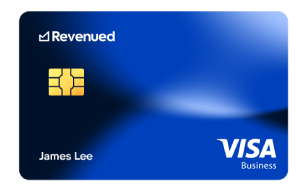What Happens if Your Business Bank Account Has 'Insufficient Funds'?
What Happens if Your Business Bank Account Has 'Insufficient Funds'?
If your business bank account has insufficient funds and you’ve opted out of overdraft protection, any outgoing payments — like checks — will be declined due to insufficient funds, triggering a non-sufficient funds (NSF) fee. The financial institution will then charge your business a fee for having written that check from an account that did not have the appropriate funds. Any other transactions will also get declined, meaning you cannot move forward with the purchase.
Many people don’t want to endure the embarrassment of a declined transaction due to insufficient funds in their bank account. Banks realized this, and they’ve developed a fee structure to help customers and businesses avoid that situation.
The Two Most Common Banking Fees
Most banks charge two key fees when an account has insufficient money: the overdraft fee (when the bank covers the payment) and the NSF fee (when it declines the payment due to insufficient funds). Although these fees may seem similar and many financial institutions treat them nearly the same, there is a small difference.
An overdraft fee is charged when an account lacks the funds to pay a debit against it, and the financial institution covers the overdraft. The NSF fee is similar in the sense that it comes when your account is overextended — but the debit is not paid with the NSF (like it would be with overdrafting).
Five Options When Your Account Has Insufficient Funds
There are a few paths you can take when your business account has insufficient funds.
- Pay the fee: If a fee isn’t going to be too costly, you can always just decide to pay it. For example, if you’re making a $500 purchase of office supplies your business needs immediately vs. $6 for a sandwich, it would make more sense to pay the fee. Business bank charges for NSF fees average around $35 per transaction, though some banks now offer business accounts with no NSF fees as a benefit. You don’t want to pay $41 for a sandwich, but it might make more sense to absorb the fee for a larger purchase.
- Limit frequency of paying fees: Sometimes it might be more convenient just to pay the fee so you can get the supplies your business needs (see example above). However, it’s important to limit the number of times you pay these fees. The costs will add up quickly, and they can put your business into an even more difficult financial situation.
- Don’t complete the transaction: It’s typically best to decline the transaction if you do not have sufficient funds in your business bank account. This option will allow you to avoid paying a fee and preserve any funds you do have in the account for something more important (or an emergency).
- Use another account: Does your business have a line of credit or savings account? If so, ask yourself if it makes more sense to use this option to cover the transaction. If you do not have an alternative account, speak with your small business bank about the options your business has outside of using a business checking account.
- Opt-in for overdraft protection: Before 2010, financial institutions used to automatically enroll businesses and customers in overdraft protection. Then, a law was passed that made it mandatory for the customer to specifically opt-in, giving them more control over their account usage. Many banks offer business overdraft protection, allowing transactions to go through even with insufficient funds, though each overdrawn transaction incurs a typical fee of $35. With this service, you’ll still be able to use your business bank account regardless of insufficient funds — but you’ll be charged each time you do, which can add up quickly. This option may not be the best one for your business, so do your research before opting in.
How to Avoid an Account With Insufficient Funds
As a small business owner, it can sometimes be challenging to avoid this “insufficient funds” situation. You have money going out to pay employees, rent and office supplies…but sometimes the money coming in doesn’t always arrive when anticipated. So how can you manage your business accounts to avoid both embarrassing situations and paying unnecessary fees?
- Monitor your activity daily: Check in on your bank accounts often. Many, if not all banks, allow you to easily log on to your accounts online or via mobile application. Use these tools to track deposits, monitor insufficient funds warnings, and stay ahead of unexpected negative bank account balances. This will also allow you to notice any suspicious activity, catch it early and alert your bank immediately.
- Get organized: Keep a running checklist, build a spreadsheet or use a financial software that allows you to organize your finances. This checklist can include monthly bills, subscriptions and any payments to vendors or suppliers, as well as give a line of sight to incoming cash. Getting organized will help mitigate the number of financial surprises your business experiences.
- Set up alerts: Many small business banking apps offer balance alerts that notify you when your account nears insufficient funds, helping you prevent accidental overdrafts. For example, you can set a notification via email or text that lets you know when your bank account has hit $200. This will prompt you to transfer money or stop using the account altogether until you can deposit cash.
- If you find a problem, call your bank immediately: All three of the above tips give you the opportunity to more closely monitor your accounts. If you notice something that doesn’t look right, alert your bank immediately so they can quickly ensure your account is secure and reconcile any issues.
Facing insufficient funds in a business account is frustrating, but proactive account management can help you avoid both NSF fees and overdraft penalties. But with proper account management, the NSF alert and fees can be avoided altogether. Many of these tips don’t take much time to implement, and they can quickly become a financial routine that will help strengthen your business’ finances over time.
RELATED ARTICLES
Revenued Business Flex Line vs Ecommerce Revenue Based Financing
Learn MoreRevenued Flex Line Pricing vs. (MCA): A Comparative Analysis
Learn MoreWhat is My Business’ Credit Utilization Ratio?
Learn MoreWhy is Cash Flow Important to Your Business?
Learn More
Boost your spending power with the Revenued Business Card
Only pay for what you use at gas stations, hotels, supply stores, supermarkets and more.
Take control with the Flex Line
Check your available balance online and request a cash draw with the tap of your finger, anytime.

